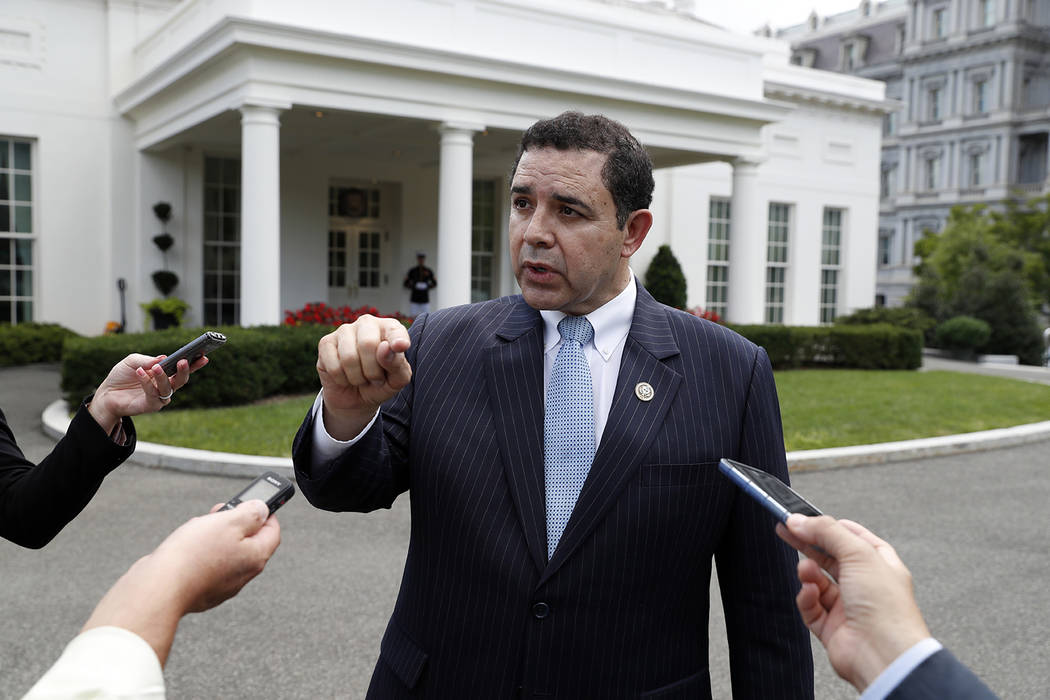Democrats move to curb Trump’s ability to shift funds to border wall
WASHINGTON — House Democrats made a preemptive strike Thursday to block the Trump administration from shifting money for military projects to construction of a Southwest border wall next year.
Lawmakers were outmaneuvered by the White House this year when Congress rejected the president’s request for border wall money, but saw the President Donald Trump declare a national emergency to divert funding from other accounts.
Following a government shutdown, Trump declared the emergency to take $3.6 billion in unspent military construction funds, including $97 million for Pentagon projects in Nevada, to pay for border wall construction that Republicans and Democrats in Congress rejected.
Democrats on the House Armed Services Committee responded Thursday, filing legislation that would cap the amount of funds that could be reprogrammed during an emergency at $250 million and place other restrictions on the Pentagon to make it harder to shift such funds for other purposes.
“This bill will ensure that the armed services will no longer be a bottomless piggy bank for the president’s worst political impulses,” said Rep. Ruben Gallego, D-Ariz., who filed the bill.
Restrictions would begin Oct. 1
The restrictions would go into effect on Oct. 1, the beginning of the 2020 fiscal year, if approved by the House and Senate and signed into law by Trump.
Armed Services Chairman Adam Smith, D-Wash., and Rep. John Garamendi, D-Calif., chairman of the readiness subcommittee, signed onto the bill that is expected to be approved in committee.
Garamendi said Congress last year debated national security and the southern border before it passed a bipartisan bill in the House and Senate that rejected the president’s $5.7 billion for border wall construction and approved instead $1.375 billion for border fencing and technology.
“Congress debated the issue of border security for a year-and-a-half and decided to spend $1.2 billion on more effective border security technologies than the president’s vanity wall,” Garamendi said.
In addition to the armed services bill, Rep. Henry Cuellar, a member of the House Appropriations Committee, placed language in the defense spending bill for fiscal year 2020, which begins Oct. 1, that would prohibit defense funds from being used to construct a wall or fence along the southern border.
Cuellar, a Texas Democrat who represents a border district, said he tucked the language into that bill “because we cannot undermine the training, readiness and quality of life for our military families.”
“We can secure the border in a much more effective way, and at a fraction of the cost,” Cuellar said of the hefty price tag for a border wall.
Nevada Democratic lawmakers, including Rep. Steven Horsford, D-Nev., whose congressional district is home to all four vulnerable projects in the state, also voiced opposition to the administration’s proposal.
Projects in Nevada
The Nevada projects included nearly $60 million for drone centers and facilities at Creech AFB, $5.9 million for a rescue flight simulator at Nellis AFB and a $31 million National Guard center in North Las Vegas.
The National Guard center, currently under construction near the Las Vegas Motor Speedway, was later taken off the list because funds had been dispersed to build the 70,997 square-foot readiness center, according to Lt. Col. Mickey Kirschenbaum.
The president’s move to redeploy military funds, and $3.1 billion in unspent drug interdiction funds from the Pentagon and Treasury, also drew protests from Republican lawmakers whose congressional districts or states had projects planned.
The Republican-led Senate and the Democrat-controlled House passed a resolution to terminate the president’s national emergency declaration. There were 12 Senate Republicans who joined Democrats to approve the resolution.
Trump vetoed the resolution and sent it back to the House, where Democrats failed to garner the two-thirds majority needed to override.
This week, the Trump administration raised the hackles of Democrats on appropriations panels with a budget request to divert $4 billion in surplus federal student aid in the Pell Grant program to pay for other projects, including a NASA exploration program.
Trump has sought to cut the Pell Grant program in his previous budget requests.
Pell Grants have drawn bipartisan support from Congress, where the program was created to provide financial aid for students from lower-income families to enroll and attend colleges.
The Trump administration’s proposal is aimed at diverting a surplus in the program to other federal spending priorities.
Contact Gary Martin at gmartin@reviewjournal.com or 202-662-7390. Follow @garymartindc on Twitter.
























